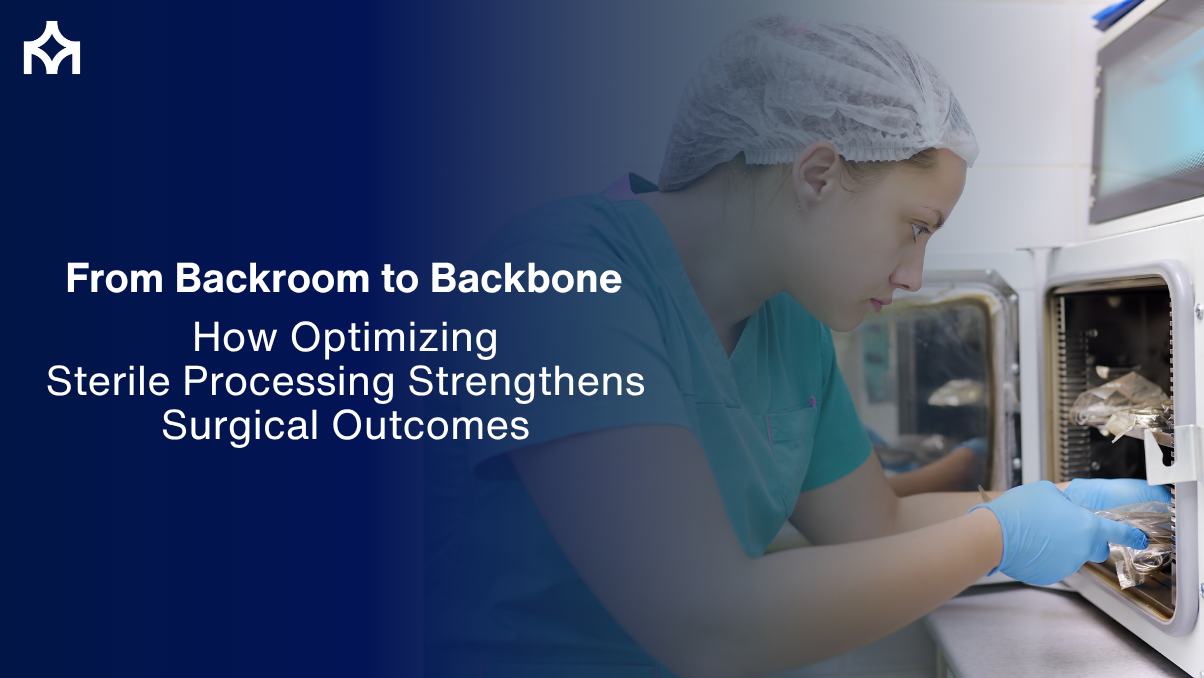From Backroom to Backbone: How Optimizing Sterile Processing Strengthens Surgical Outcomes
From Backroom to Backbone: How Optimizing Sterile Processing Strengthens Surgical Outcomes
Behind every successful surgery lies a process that few ever see but every patient depends on. Deep inside the hospital’s sterile core, the Central Sterile Processing (CSP) department quietly ensures that every instrument used in the operating room is safe, sterile, and ready. It’s a world of precision, timing, and teamwork where even a minor delay can ripple across surgical schedules and patient outcomes.
Yet, despite its critical role, CSP often operates under immense pressure. Staffing shortages, aging infrastructure, and rising surgical demand have turned this essential service into one of the most persistent bottlenecks in U.S. hospitals.
The result? Operating room inefficiencies, increased infection risks, and unnecessary costs that directly impact both patient safety and hospital performance.
As Modality Global Advisors prepares to host its upcoming webinar, Fixing Central Sterile Processing – Real Operational Solutions You Can Implement, one message is clear: it’s time to bring sterile processing out of the shadows and recognize it for what it truly is the backbone of surgical care.
Sterile Processing Demands Immediate Attention
CSP performance is far more than an operational concern; it's a clinical imperative. Studies have shown that up to 25% of surgical site infections (SSIs) are linked to errors or lapses in instrument reprocessing (American Journal of Infection Control, 2023). Meanwhile, operating room downtime, often caused by missing or delayed instruments, costs hospitals an estimated $20–$80 per minute depending on the facility (AORN, 2024).
Workforce shortages further compound the issue. A 2024 Healthcare Purchasing News survey reported that nearly 40% of sterile processing departments in U.S. hospitals have vacant positions, contributing to burnout, reprocessing delays, and heightened risk of non-compliance with infection control standards.
From Bottlenecks to Breakthroughs: Strategies That Work
- Elevate CSP as a Strategic Clinical Partner
CSP must be integrated into surgical governance not viewed as a support service. Including sterile processing leaders in perioperative meetings, aligning metrics like tray turnaround time and error rates with OR performance, and recognizing CSP contributions publicly can shift culture and accountability. - Invest in Workforce Competency and Retention
Certified and well-trained technicians are the foundation of safe instrument reprocessing. Hospitals that invest in structured certification and continuing education programs have seen a 23% reduction in reprocessing errors (IAHCSMM, 2023). Providing career growth pathways and recognition programs also helps reduce turnover. - Digitize Tracking and Communication
Digital solutions like RFID tagging and instrument-tracking software replace error-prone manual systems. Real-time tracking ensures every tray’s location and sterilization status is visible to both CSP and OR teams, reducing lost instruments, minimizing delays, and strengthening accountability. - Apply Lean Principles for Workflow Optimization
Reorganizing workspace layouts, standardizing instrument trays, and using one-way sterile flow can improve turnaround times by up to 30% (HealthTech Insights, 2023). Lean methodology helps identify bottlenecks and streamline processes for consistent throughput. - Leverage Automation and AI
Modern CSP departments are incorporating automated washers, sterilizers with data logging, and AI-driven scheduling to improve efficiency. Early adopters report significant reductions in manual errors and improved compliance with regulatory documentation.
Redefining CSP as a Driver of Surgical Excellence
Optimizing sterile processing is about safety, reliability, and sustainability. When CSP operates at its full potential, surgical teams perform more efficiently, patients experience fewer delays and complications, and hospitals gain measurable financial and operational advantages.
The takeaway is clear: sterile processing should no longer be seen as a backroom task; it is a clinical cornerstone of surgical success. Hospitals that invest in workforce development, digital transformation, and cross-department collaboration will lead the next era of perioperative excellence.
As Modality Global Advisors’ upcoming webinar explores real operational solutions for fixing CSP bottlenecks, the message to healthcare leaders is simple:
Sources:
- American Journal of Infection Control (2023)
- Association of periOperative Registered Nurses (AORN, 2024)
- Healthcare Purchasing News (2024)
- International Association of Healthcare Central Service Materiel Management (IAHCSMM, 2023)
- HealthTech Insights (2023)






